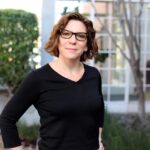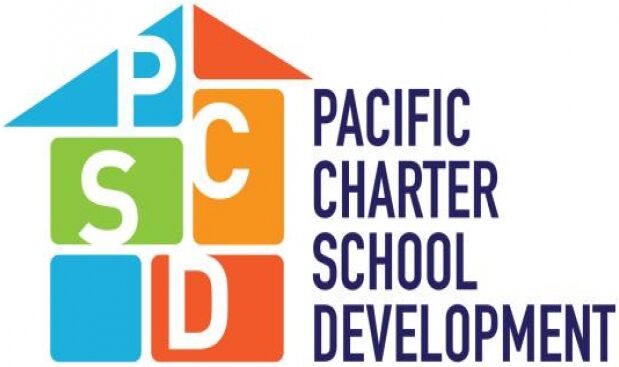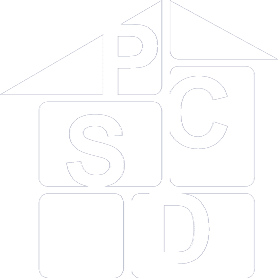As PCSD continues to work on our commitment to equity, we are always interested in learning more about what our partners are doing in this space. I sat down with Laura Knauss, Principal who leads the firm’s education practice with team members located in all four offices throughout the state, and Kellie Schneider, Associate Principal and Director of HR to hear about Lionakis and their efforts.

- Tell me a little about Lionakis and the company’s areas of focus.
Lionakis is a multi-discipline firm with in-house architecture, structural engineering, and interior design. We work in three main market areas – civic (corrections, court houses, state offices, county offices), education (pre-K through university), and healthcare (acute, medical office buildings, clinics). Most of our projects are in California, but occasionally we work outside of California. We have a staff of just under 200 people.

- What set Lionakis on the path to make a commitment to equity?
We believe that our core markets – civic, education, and healthcare – are the pillars on which strong communities are made. Our mission to “design a better future,” is central to how we view equity: the built environment can level the playing field, providing safe and inspiring spaces for all. The firm formalized its efforts in 2019 when an internal equity, diversity and inclusion (EDI) committee was established with volunteer representatives from different markets throughout California.
- What additional steps has the company taken? What are your roles within that?
We have made some tangible efforts in our commitment to EDI since 2019, starting with training our collective team to recognize their own areas of unconscious bias.
- Chat circles: We host monthly chat circles where we discuss a variety of topics, such as mental health, inclusive restroom design, etc… We also try to understand what our team knows and wants to know about EDI through our chat circles.
- Staff demographics: We track and measure the demographics for our internal workforce.
- Media campaigns: We engage in external social media campaigns and in internal initiatives. We hosted an #IAM campaign internally for the workforce to share information about themselves in a way that they were comfortable doing so and with people they were working with on a day-to-day basis. It was a way to show how we are alike and different at the same time.
- Pronouns: We changed our email signatures to allow for the inclusion of pronouns for individuals interested in doing so.
- Resume review: We started anonymizing resumes of applicants to take out any potential for unconscious bias.
- Measuring our impact: We released a survey that will be conducted annually to identify what EDI means to our collective team so we can start to focus on areas of importance and so we can measure how our work is impacting our team overall.
- Partnering: We participate in NOMA (National Organization of Minority Architects) as well as a variety of AIA’s (American Institute of Architects) women in architecture groups. We also have individual contributors who volunteer time with other professional organizations that have focused EDI efforts. We hope to host events in collaboration with those organizations in the near future.
We are both members of the EDI committee and are senior leaders within the firm so we are in unique positions to be able to recommend and effect changes across the firm overall. While we strive to have representation from members in each of our locations and markets, in areas where we don’t have representation, we are able to reach the collective team through the chat circles.
Diversity in the (Architecture, Engineering, Construction) AEC Industry is a work in progress. The future is much more diverse but it’s likely going to take a half generation to see that change.
- How are you applying those efforts to your internship program and recruiting/outreach in general?
We attend recruiting fairs across the state and when doing so, we try to send team members that represent the people we are trying to recruit. This year, we are bringing on eleven interns to work side-by-side with teams in most of our offices. We keep track of our interns through our emerging professionals email program, highlighting internships, new roles within the firm, and professional development opportunities.
For our permanent positions, we advertise on the NOMA job board but also rely heavily on our internal referrals. We are always looking for new efforts to increase our candidate pool. And as mentioned before, we also anonymize applications to create equity for all applicants.
Additionally, we host shadow days for high school students and are very focused on reaching into high schools and even middle schools to expose them to architecture as a profession.
- How do you see organizations like PCSD and Lionakis working together in this area?
Ideally, we would like to be able to get into the classrooms and share information about architecture, interior design, and engineering as students start to contemplate college.
- What has been the most difficult step in moving forward?
- What recommendations would you give to someone who hasn’t traditionally seen this field as an opportunity?
Job shadow days are good. By shadowing an architect or engineer and getting out in the field, students see construction going on as well as the construction team. There is a huge market for skilled labor and a lot of pathways to get there. Not all construction work is dirty, and not all architects and engineers work only in the office.
Also, there are other roles for individuals in this industry that support architecture, engineering, and design. You don’t need to be an architect to work in the field. You could work in accounting, HR, marketing, and project coordination, among many other roles. It may take a different set of skillsets but it’s adjacent and allows you to work in an industry you are interested in.


